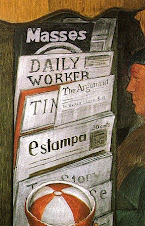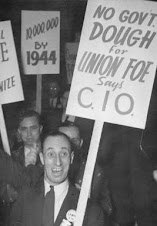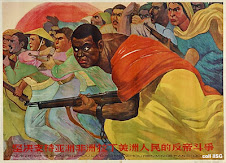By Caleb T. Maupin
Published May 11, 2007 8:55 PM
Thirty-seven years ago, demonstrating students were shot and killed at Kent State University in rural Ohio and Jackson State in Mississippi. New evidence has emerged about what happened at Kent State so many years ago.
In the year 1970, insurrection was breaking out all across the country. When President Richard Nixon announced the U.S. invasion of Cambodia on April 30, students opposed to the Vietnam War refused to go to classes. A nationwide student strike followed.
At the same time, truck drivers in the Teamsters union were on strike all over Ohio. Gov. James A. Rhodes sent the National Guard to patrol the city of Cleveland and they violently clashed with the striking workers.
Something brewing in Kent
On May 1, Kent students held a demonstration of around 400 people. Just that day, after the charter of the campus chapter of Students for a Democratic Society had been revoked, the students formed a new radical organization on campus.
That evening fights broke out in local bars as students expressed their outrage over the escalation of the war. Suddenly thousands of youth were cast out into the streets. Their numbers multiplied to thousands. Chanting anti-war slogans, some gathered around a bonfire in the middle of the street.
In the ensuing rebellion, these working class students began to fight with police, countering their nightsticks with glass bottles. The Kent State May 4th Task Force said the targets of student rebels were “mainly political” that night. Of the 43 windows that were broken, 28 were at a bank. Many understood what Workers World Party was expressing at the time with its slogan “Big firms get rich while G.I.s die.”
Bikers fought alongside hippies. Youth of many different ethnicities and nationalities armed themselves with sticks and rocks and fought together against the police. Anti-war slogans filled the air. The police were outnumbered and losing their grip. Something was clearly brewing in the streets of Kent, something that Governor Rhodes, then currently running for the U.S. Senate on a “law and order” ticket, needed to suppress.
The mayor of Kent declared a state of emergency and a dusk-to-dawn curfew. He also requested that Gov. Rhodes send in the National Guard.
The next evening, a crowd of 300 students defied the curfew, gathering on the campus commons and chanting anti-war slogans as the sun went down. They marched through the dormitories of the campus, and again their numbers grew to thousands.
The students surrounded the building of the campus ROTC, an old building that had already been boarded up and was scheduled to be demolished.
The rage the students felt at seeing their brothers, uncles and fathers come home in body bags was turned against a symbol of the military apparatus of the U.S. Windows were broken. Students attempted twice to burn the building down, but both times their efforts were foiled by the local fire department with police protection.
The protest moved on to another location and then fizzled out. As students returned from the protest, they noticed that the ROTC building, after being extinguished twice, was suddenly up in flames once again. Though some gathered and rejoiced at the burning of the building, it is still unclear what made it happen.
The response
The next day, May 3, Gov. Rhodes declared on national television that the student rebels in Kent were “the worst type of people we harbor in America, worse than the Brown Shirts and the communist element.” He even compared them to “nightriders” and “vigilantes,” a clear reference to the Ku Klux Klan.
As he was giving the speech, the campus of Kent State University filled with National Guard units. Encampments were set up. Armored vehicles patrolled the streets. The city became a war zone. The student slogan that had echoed around campus just two days before, “Bring the war home,” had been fulfilled.
It was really a class war, between the mostly working class students of a public university who opposed the war, and the official body of armed men defending the state—Ohio, the U.S. government and the capitalist class that rules them both.
It confirmed what Russian revolutionary V.I. Lenin had written back in 1917, in his famous work “The State and Revolution.” What the essence of the state boils down to is not politicians but “special bodies of armed men.”
Thousands of students gathered on campus only to be met by the National Guard. Helicopters flew over them spraying teargas. The National Guard broke up their demonstration violently.
On May 4, the students gathered once again. At first it was a small crowd of 200, but it soon reached 1,500. They were told that all public gatherings were illegal, but remained strong. They were told to disperse but pumped their fists in opposition and refused.
Teargas canisters were fired at the youth, who threw them back.
The troops were ordered to point their loaded weapons at the students. With the nearest student only 60 feet away, according to the FBI’s own report, the Guard opened fire. For 13 seconds the shots continued, 67 in all.
Four people were killed. Nine more were seriously wounded.
All around the country colleges shut down. Thirty ROTC buildings were burned in the following two weeks. Five days later 100,000 marched in Washington, D.C. Nixon’s speechwriter described it as “civil war.” Battles between the police and the anti-war movement broke out all over.
Jackson State
Youth at Jackson State College, now Jackson State University, in Jackson, Miss., took to the streets in rebellion 10 days after the shooting at Kent. The mostly Black youth frequently had endured racist taunts and harassments from racist whites driving past as they walked to class. These Southern racists were outraged that Black people were permitted to attend college.
Just eight years earlier, thousands of armed vigilantes in the same state had occupied the University of Mississippi to prevent a single Black student from attending.
On May 14 the Black youth of Jackson State College, in response to the killings at Kent State, their outrage at the Vietnam War, and their continual harassment at the hands of the local population, took control of Lynch Street, a major roadway. They lit a dumpster on fire, turned over a truck and blocked traffic.
Some 75 local police plus state troopers were soon on the scene to dispel the students, but failed. The crowd of merely 100 students fought back against nightsticks, bayonets and teargas with bricks and rocks. They defiantly mocked the police with what the press called “obscene catcalls.”
Out of the blue, the authorities opened fire. Some witnesses say a campus security guard had already calmed the crowd when the shots began. Authorities later claimed they had seen a “powder flash” as justification for firing hundreds of shots. Some 460 of the bullets hit a nearby dormitory.
Two youths were killed and countless others wounded. One who was killed, James Earl Green, was behind the police line, meaning that an officer must have turned around in order to kill him.
As students lay bleeding on the ground, police refused to allow ambulances to be called until they had carefully picked up shell casings that could be used as evidence against them. Finally, the students were taken to a hospital for medical care.
A gripping account of what happened can be found at the Jackson State University web site.
New evidence at Kent State
Alan Canfora is a survivor of the Kent State massacre. He was shot in the wrist by the National Guard when the shooting began. He is currently director of the Kent May Fourth Center and recently came into possession of a tape recording during research for a forthcoming book.
The tape was recorded by students at Kent State who put a microphone to a dorm window as the events of May 4 unfolded. Canfora says the words “Get set, point, fire” can be heard on the tape, showing that an order was given to shoot the students.
The corporate media has come down hard on Canfora for his release of this tape. Columnist Connie Schultz in the May 4 Cleveland Plain Dealer labeled Canfora someone who “made a name for himself as the Kent State survivor who won’t shut up.”
But the tape goes to the heart of the question. The state claimed individual guardsmen were nervous and shot out of fear. But if a command was issued to fire on the students, then it implies a wider conspiracy to cover it up.
Countless times when the people of the U.S. have been in revolt, the government has used violent means to suppress them. The shootings at Kent State and Jackson State, while they show the capitalist state is only too willing to employ tactics that violate the “rule of law” and the “freedom” so touted in this country, also show that the movement can survive these atrocities and win its goals.
Five years later, after the rebellions spread to the armed forces themselves, the U.S. had to pull its last troops out of Southeast Asia and end the war.
Articles copyright 1995-2007 Workers World. Verbatim copying and distribution of this entire article is permitted in any medium without royalty provided this notice is preserved.
Subscribe to:
Post Comments (Atom)










































No comments:
Post a Comment